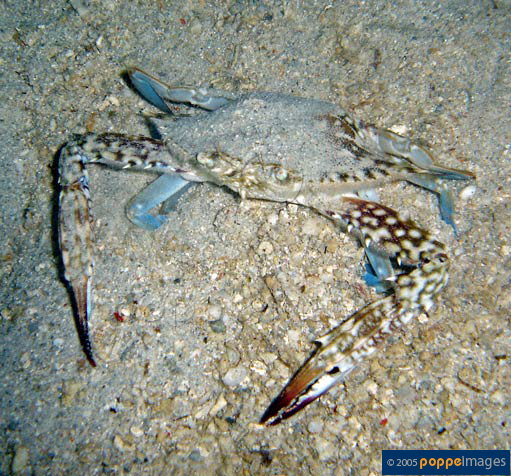| Portunidae (swimming crabs) |
| 20 cm CW (male/unsexed) |
|
reef-associated; brackish; marine; depth range 0 - 65 m |
| Indo-West Pacific: from China, Japan and Korea to Philippines and westwards to the straits of Malaccca, also present in the Northern Territory, Australia. Tropical to subtropical. |
|
Carapace rough to granulose, regions discernible; front with 4 acutely triangular teeth; 9 teeth on each anterolateral margin, the last tooth 2 to 4 times larger than preceding teeth. Chelae elongate in males; larger chela with conical tooth at base of fingers; pollex ridged. Color: males with blue markings, females dull green. |
| Matures at about 1 year. Collected mainly by artisanal traps, trawls, beach seines, cylindrical wire traps, folding traps, pots, hop nets, drop nets, and sunken crab gill nets. In shallow waters, it is caught using beach seines, rakes, and dab nets. Sold in local markets (fresh or frozen) and for the crab-flesh canning industry. Most widely sold in markets of Southeast Asia, including the Philippines (Ref. 343). Maximum depth from Ref. 801. Immediate subtidal to a depth of 40 m (Ref. 801), on sandy to sandy-muddy substrates in areas near reefs, mangroves, and sea grass and algal beds (Ref. 343). Juveniles tend to occur in shallow intertidal areas (Ref. 343). Burrows in sand when disturbed; carnivorous and voracious predator (Ref. 801). Host to protozoans, helminths and crustaceans (Ref. 104981). |
|
Not Evaluated (N.E.) Ref. 123251)
|
| poisonous to eat |
|
Source and more info: www.sealifebase.org. For personal, classroom, and other internal use only. Not for publication.

